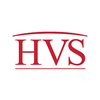2016 HVS/STR Hotel Valuation Index
HVS, the world's leading hospitality consulting and valuation firm, in collaboration with STR, is pleased to deliver the 2016 Hotel Valuation Index (HVI). The HVI offers critical information on 70 U.S. hotel markets and the nation, including:
- Hotel value changes and projections through 2019
- Intelligence on market dynamics for primary, secondary, and tertiary hotel markets
Each year, more than 80 HVS hotel experts conduct thousands of market studies, feasibility studies, and appraisal assignments for all types of hotels across the U.S. The intelligence gathered from these engagements, combined with analysis of data on hotel performance from HVS and STR, supports the conclusions and projections presented in the annual HVI.
The HVI is an index, a statistical concept reflecting a measure of the difference in the magnitude of a group of related variables compared with a base period. As such, it is a measure of broad market trends, rather than a conclusion as to the specific value of any asset, and cannot be applied to an individual asset. A good comparison is the Consumer Price Index. While this index provides a reliable measure of the overall rate of inflation in a region, it does not indicate how the price of milk has changed at your grocery store.
In any market, the aggregate nature of the STR occupancy and average rate data limits its comparability to an individual asset. In the case of the STR data used in developing the HVI, the breadth of the sample included in the report is a material factor. The sample for each market area includes virtually all the hotels in the defined market, ranging from economy to luxury properties; limited-service to full-service operations; assets in poor to excellent condition; and a wide array of locations, from Tier 1 urban settings to peripheral locations in tertiary submarkets. The resulting data, while an excellent measure of the overall trends in the market as a whole, cannot be applied to any individual submarket or asset group, much less any one hotel. For example, the addition of new supply, or a change in the performance of an individual submarket within the broader market, can cause that submarket to have significantly different results than the market as a whole.
Numerous factors influence the value of an individual asset, including the property's age, condition, location, amenities and services, brand, management expertise, and reputation. These factors must all be considered in the context of the hotel's specific competitive market, including the nature, strength, and trends in demand generators; the character and competitive posture of the existing hotels; and the potential addition of any new properties. The value of any individual asset can only be concluded after a thorough investigation of all these factors. And that conclusion will invariably differ—often materially—from the index indicated by the HVI.
So how can the HVI be of use to an individual investor? Although the HVI cannot tell you what a particular hotel is worth, it does provide excellent "big picture" data, indicating which market areas are experiencing positive trends, and thus may present good investment opportunities. The HVI for the U.S. is a measure of the strength of the lodging industry as a whole and, specifically, the hospitality investment market. The HVI for the various identified markets can provide a basis to evaluate and compare different geographic regions.
Visit http://hvi.hvs.com for more information.
Stephen Rushmore
President
516-248-8828, ext. 278
HVS
